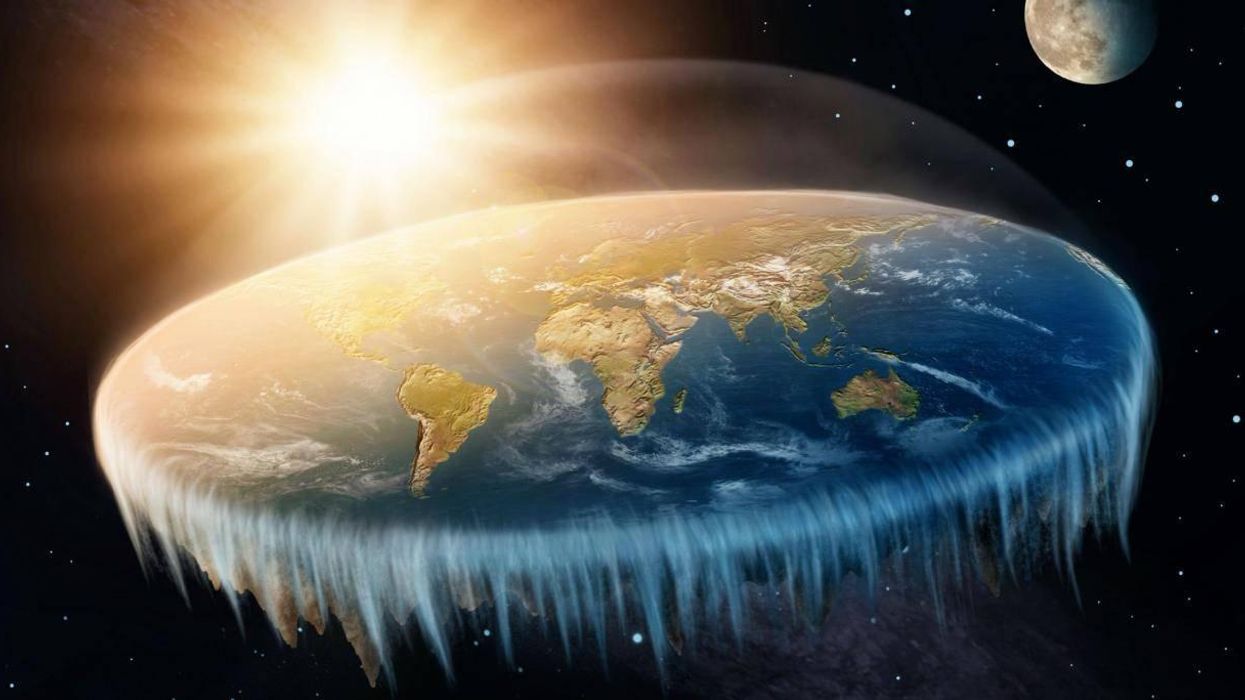Science & Tech
Mimi Launder
May 24, 2020

Picture:
iStock
Pretty much everyone knows the Earth is a globe. But a very, very small minority of us cling inexplicably to the idea of a flat Earth.
So, with everyone staying inside over the course of the Covid-19 pandemic, we thought it was the perfect time to compile the ways you can prove that the Earth most definitely a globe.
1. Look upwards
Yep, this one's pretty simple. When you look up at the night sky, you can only see certain constellations from certain points on Earth.
Someone in Australia will see a different sky to someone in England at night - for example, you can't see Polaris, the North Star, from the southern hemisphere.
If the Earth was flat, everyone would be able to see the same constellations.
2. Look down
An equally straightforward way to prove the Earth is not flat is to simply measure your shadow.
If you get two people at different distances from the equator, and they measure their shadows at the same time, their shadows will be different lengths. But if the Earth was flat, their shadows would be the same.
Eratosthenes, who conducted a version of this experiment, knew this 3,000 years ago
3. Weigh yourself
Gravity, which pulls everyone towards the centre of our planet's mass, means we weigh the same wherever we are in the world.
But a flat Earth would mean that those at the edge of the disk would be pulled sideways, while those at the centre would be pulled down.
To iron out this problem, Flat Earthers have concluded there is no such thing as gravity - you know, that force that pretty much holds the entire Universe together.
But if they were correct, you would not be able to weigh yourself at all. You would also be dead.
4. Take a trip to Antarctica
Flat Earthers argue that Antarctica is actually a massive ice wall around a flat Earth.
But, if that were true, the countless planes that fly over Antarctica would surely have just... fallen off?
5. Check your watch

To explain seasons, Flat Earthers argue that the sun orbits in a circle above us.
But that doesn't explain time zones, though this is their attempt, which shows the sun as some kind of spotlight,
Everyone whose ever used a torch at night knows you can see its beam from the side - and that would apply to a flat Earth too.
6. Grab a compass
Our planet has a magnetic field generated by the molten iron at the core of our planet.
If the Earth was flat, it would have no core. And even if it had a flat layer of liquid metal instead, the planet wouldn't rotate in a way that created a magnetic field.
7. Grab a pendulum
This famous experiment was first demonstrated in 1851 by Leon Foucault and is now found in museums around the world.
If you watch a pendulum for long enough, you'll notice it starts to swing in a slightly different direction, which proves the Earth is rotating beneath your feet.
HT IFLScience
Top 100
The Conversation (0)
Sort by















